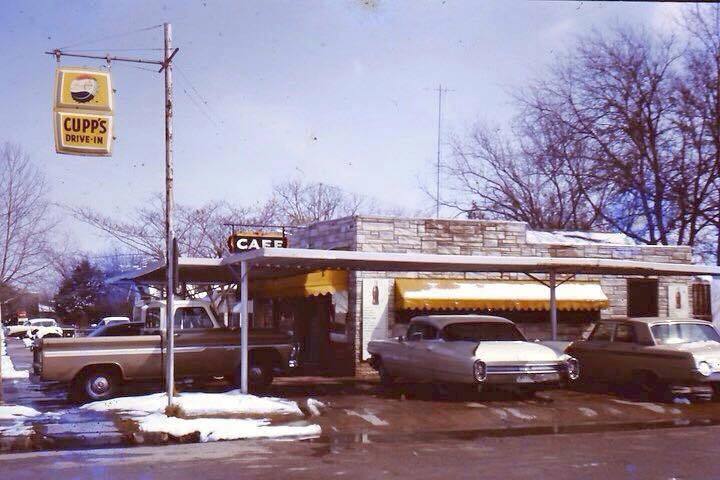The Rise of the American Diner
This file appears in: Cupp's Drive-Inn
Cupp’s Drive-Inn opened during the height of the popularity of drive-ins and diners. As more Americans purchased vehicles for themselves and their families, restaurants that provided travelers with quick service became popular. The word drive-in was added to the American lingo, and themed food stands such as A&W, White Tower, and White Castle expanded locations. During the Depression, large diners were too expensive to build, so the business of repairing and modifying existing diners grew. These restaurants survived because of their affordable menus and convenient locations. The deco-style of the thirties influenced drive-ins’ architecture, with unusual shapes (circular or octagonal), playful themes, futuristic lines and neon colors becoming popular elements to incorporate. Diners became more streamlined in the forties, with stainless steel, stylized lettering, Formica surfaces, and the addition of booths. Diners and drive-ins reached their height in the forties and fifties. By the 1960s, fast food restaurants with their quick, cheap, and predictable menus were more appealing to commuters. Diners were increasingly seen as tired and obsolete. Of the thousands of drive-ins nationwide, only the Sonic chain, some A&Ws, and some individually owned drive-ins capitalizing on their retro atmosphere remained. In the nineties, however, an appreciation for classic dinners was rekindled thanks to increased interest in historic preservation. Today, there is widespread effort to restore and preserve historic diners across the country
This file appears in: Cupp's Drive-Inn
